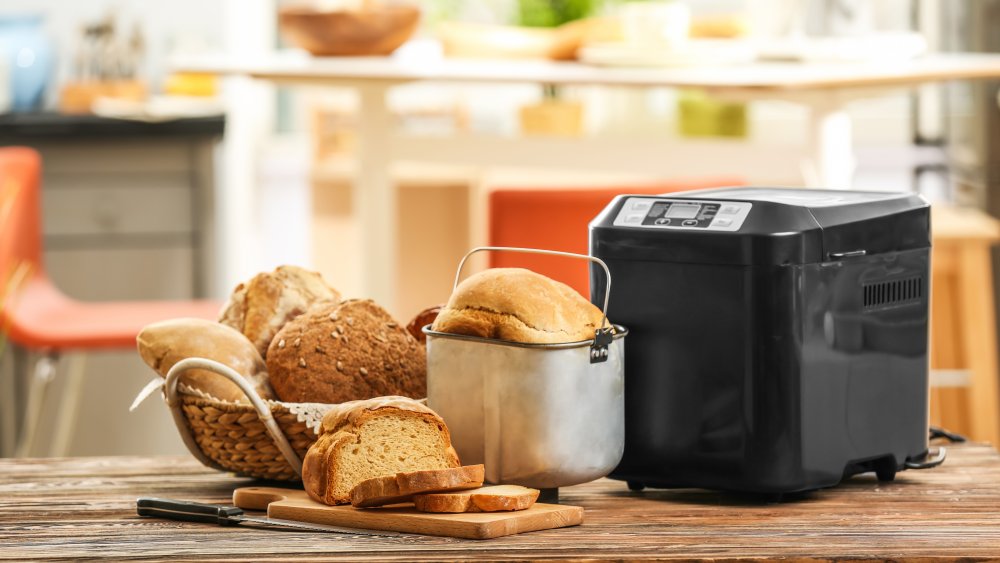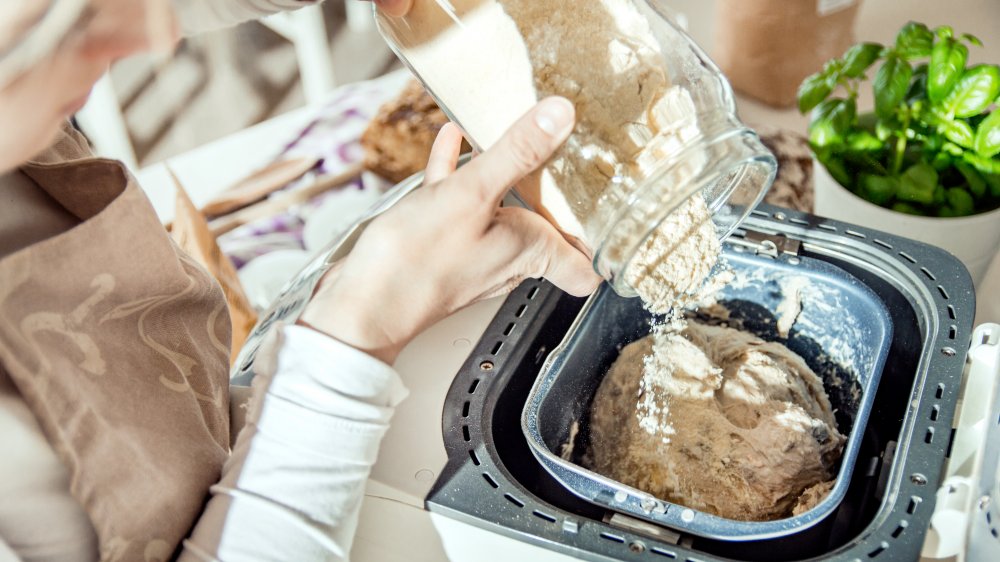The Biggest Mistake You're Making With Your Bread Maker
Seemingly everyone is on the bread-baking bandwagon. We've reached the point of yeast shortages that will take a month or two to restock, and some bread-baking machines have even sold out (via USA Today).
If you are one of the lucky people to already have a bread maker at home, then perhaps you have encountered a few issues during your bread-baking adventures. Baking is a science, and there are many ways the experiment can go wrong; yes, even when you're making bread in your bread maker (via Real Simple).
One of the most challenging things about using a bread maker is that it still requires hands-on work. Bread makers should not simply be set, and forgotten to complete the process. External factors affect your bread maker and cause the bread to react. For instance, cold or drafty environments can cause the length of time needed for the dough to rise to be longer than expected.
So what other bread maker mistakes are you making, and how can you correct them?
How to fix your biggest bread maker mistakes
The most important thing you can do when using a bread maker is check in on your loaf regularly; simply lift the lid to see how the dough is acting. For example, if you lift the lid to check the kneading process, try adding a teaspoon at a time of water or flour if the dough is too dry, or wet after five minutes of kneading.
Another easy correction for big bread maker mistakes is to interfere with the set time should the dough need it. The bread machine can only go by its timer, which is why it is important to check-in.
Finally, one last major mistake people make with bread-baking machines is that the dough sometimes needs to be reshaped. If during the proofing period the dough rises unevenly and appears misshapen with a high peak in the center of the loaf, that's a sign it needs to be reshaped. Simply lift the dough out of the machine, form it back into a loaf shape, and place it back in the machine. This will help it to be more even.
So, whatever problem you have while using your bread maker, the bottom line is it can likely be solved by keeping an eye on the loaf throughout the process, and evaluating what the bread needs. There is absolutely no harm in getting more hands-on, even though the machine is thought of as a do-it-all contraption.

